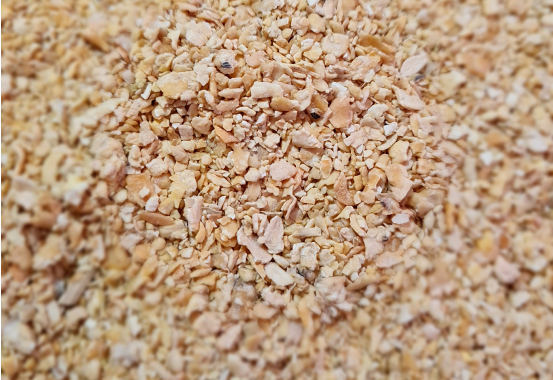- Home
- About
-
Our Products
- Grains
- Oil seeds
- Meals
- Oils
- Derivate
- UBM Group
- UBM Community
- Press
- Contact
Sunflower ranks with soybean, rapeseed, cottonseed, and peanut as one of the five most important annual oilseed crops in terms of tonnage (FAO, 2012). Sunflower seeds are mainly used for their oil, but as with other oilseeds, the meal left behind after oil extraction is a valuable product because of its high protein content. Sunflower meal (SFM) comprises about 40% protein when hulled seeds are mechanically extracted, about 50% when an organic solvent is used for oil extraction and 53–66% for similar defatted meal prepared from dehulled seeds (Bau et al., 1983).

Sunflower meal is byproduct of crushing sunflower seed for oil. The nutrient content of SFM varies with the type of processing used for extracting the oil. Solvent extracted SFM has higher concentrations of protein and lower concentrations of oil and fiber compared with mechanical extracted SFM. Dehulled SFM will have slightly higher protein concentrations and less fiber. The protein in SFM is more soluble than SBM (34 vs 17% of N, respectively), but processes such as extrusion decreases solubility.
At present, sunflower meal is mainly used for rabbits and ruminants (respective incorporation rates are 10–12% and 10–20%). Levels for laying birds (less than 5%) or pigs (less than 1%) have been noted (OECD, 2007). Hulled meal, in which the protein content has been increased nearly to 40% by an efficient hulling, can be a useful feed for broilers and fattening pigs. In these cases, the incorporation rates of previously hulled sunflower meal may then be increased to at least 10% (OECD, 2007).
Sunflower meal is more ruminally degradable (74% of crude protein) than soybean meal (66%) or canola meal (68%). Sunflower meal is high in protein, but due to the lack of a sufficient content of lysine, is more suitable for ruminants than nonruminants (OECD, 2007).